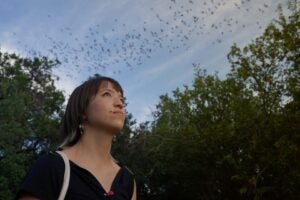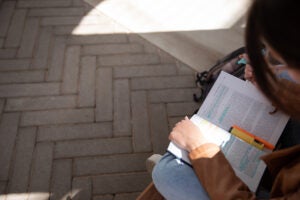AUSTIN, Texas—A “Gala Event” featuring a live classical music performance by the Miró Quartet will be used as a technology showcase for some of the high-speed applications possible with the Internet2 networking capabilities demonstrated in conjunction with the Fall 2004 Internet2 Member Meeting in Austin on Sept. 27-30.
The Office of the Vice President for Information Technology and the College of Fine Arts at The University of Texas at Austin will host the gala performance event at 8 p.m., Tuesday, Sept. 28 on campus for the Internet2 members and invited guests. Gala Event information is available on the Internet2 Web site.
Using experimental technologies developed by the University of Southern California (USC) Immersive Audio Laboratory that includes the inventor of THX sound, the string quartet will be recorded live in Bates Recital Hall and streamed in real time for live reproduction in McCullough Theatre, 200 yards away. The performance will be displayed in life-sized HDTV and 10.2 channel immersive audio. A separate high definition video stream will be captured and transmitted for each performer.
The combined audio and video elements will be streamed over Internet2 networks using Remote Media Immersion (RMI) technology developed at the Integrated Media Systems Center at the USC Viterbi School of Engineering. The result is expected to be a recording of such high fidelity that those who’ve experienced this technology say it is difficult to tell the live performance from the reproduction.
Gala attendees will be divided into two groups, switching halls at intermission so both groups can compare the streamed and live versions. Personnel from the university’s Measurement and Evaluation Center will survey gala-goers to find out how effective the technology is at reproducing live performance.
“The quality of experience that can be delivered through high-bandwidth networking vastly outstrips what one can see on the regular Internet or on cable television,” said Dr. Larry R. Faulkner, president of The University of Texas at Austin and chairman of the Internet2 organization. “There are opportunities to think anew about how top-level artistic performances are made available or how master classes for students are organized and delivered, even across the country or around the world. The gala, while surely meant to provide enjoyment for the audience, is also a serious experiment to test public reaction to some of the possibilities.”
Douglas Van Houweling, president and CEO of Internet2 said, “High-performance networking capabilities like those used in this event and routinely used by the Internet2 community are increasingly critical to research and education. The importance of quickly and reliably moving large amounts of data so that individuals can collaborate in working groups, engineering projects, research initiatives and musical performances makes the testing, development and deployment of the next generation of network applications and technologies underway in the Internet2 community essential.”
“While Internet2 provides a high-performance connection to selected research universities around the country, we are also developing a plan to link educational institutions in Texas through the new Lonestar Education And Research Network (LEARN),” said Dan Updegrove, vice president for Information Technology at The University of Texas at Austin and board chair of LEARN.
The event marks the first time a performance will be recorded and streamed live at such high fidelity, and it will serve as a demonstration of how high-speed networks can be used to faithfully reproduce live events—arts performances, teaching sessions and even medical procedures—over vast distances. Because of networks like Internet2, the day may soon come that a high school in Midland watches the Boston Symphony play in its home gymnasium, or that a doctor in Houston directs medical equipment in Amarillo.
“The implications of this technology for the future of music are significant. They invite us to think about our discipline in new and creative ways,” said Robert Freeman, dean of the College of Fine Arts. “Few other music schools are incorporating technology in their curricula to the degree that is true here. The nature of touring, teaching, performing and recording will dramatically change in the years ahead, and we need to prepare our students for that future.”
The Miró Quartet, one of America’s brightest and most exciting young string quartets was appointed Faculty String Quartet at The University of Texas at Austin in 2003. Since winning first prize at the 1998 Banff International String Quartet Competition and the prestigious Naumburg Chamber Music Award in 2000, the Miró Quartet has captivated audiences around the world. Formed in fall 1995, the quartet met with immediate success, winning the first prize at the 50th annual Coleman Chamber Music Competition in April 1996, and the following month taking both the first and grand prizes at the Fischoff National Chamber Music Competition. The members of the Miró Quartet are Daniel Ching, violin; Sandy Yamamoto, violin; Joshua Gindele, cello; and John Largess, viola.
NOTE to editors/producers: A live camera pool feed from the Bates Recital Hall will be provided via a mult box for news media in the loading dock at the northwest corner of the building during the performance. As is the case of many performances, television cameras and flash photography will not be allowed in the Bates Recital Hall and McCullough Theatre during the program. The Austin American-Statesman will serve as the pool camera for still photography. Contact Zach Ryall at 512-445-3685 or photoed@statesman.com. Reserved parking for news media is available in the recital hall loading dock parking lot area.
For more information contact: Lauren Kallens, Internet2, 202-492-5702, or Robert D. Meckel, The University of Texas at Austin Office of Public Affairs, 512-475-7847.



